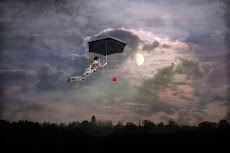War Reporting and Embedded Journalists: Whatever
Fits by Izzy Woods
The conflicts in Iraq and Afghanistan have dragged out over the last ten years, and even now are still going on. When the military action began the media coverage was universal, and unless you never watched TV or read newspapers, you would have had something about the war pushed in your face.
But now, even though troops are still fighting in Afghanistan, the media coverage is sparse. Negative public opinion of the conflicts may have something to do with this, as with is being ‘old news’ nowadays. But the way these conflicts have been reported is different to previous conflicts.
The battles fought at the beginning of the 21st century were reported by embedded journalists, reporters that became part of a military unit.
Front line journalism
"Embedding" involved journalists being integrated into combat units, which meant they ate, slept, and traveled with soldiers, experiencing battles first hand and witnessing the combat their unit participated in. There was no room for journalists to bring a new writing chair or comforts they enjoyed in the office back home.
While this arrangement offered the journalist on the front line a greater degree of protection, there are claims that it gave the military too much control over what was being reported. This was often the opinion of "unilateral" journalists, which were able to write about the war in all its aspects.
Nevertheless, embedded journalists were in a position to see the military in action first hand and with the advanced technology available which ensured all the action could be recorded, compiled, and broadcasted at incredible speed. They were able to connect live feeds from the battlefield to newsrooms around the world with the help of satellites, and often reported directly from the frontline.
With the help of technology, journalists were able ensure vast amounts of information and images to be broadcasted. Consequently, reports were often unedited and the quality of reports dropped as deadlines had to be met while more events were constantly unfolding.
New technology allowed instant contact from the battlefield to viewers back home, and ensured numerous reports and video links to be broadcasted, but this also created security problems. There were instances of journalists revealing crucial details of military plans, like the case committed by Geraldo Rivera, who put an entire unit of the American 101st Airborne Division in danger. He drew a map of Iraq in the sand and showing where his unit was in comparison to Baghdad, and even where they were heading next.
Symbiosis or parasitism?
The dependency the embedded journalist had on the military was mainly for information and support, which ultimately left the commanders in control as they could decide on what the journalists saw, and what they would not see. There have been claims that the embedded journalist gave a sanitized picture of events, which is likely to be a result of the forced constraints of being embedded. The effect the military had on the embedded journalist was to almost make war seem acceptable, and there were instances when information passed on to reporters by the forces was unfounded, presumably to ensure "good" news about the war. There is evidence that journalists would prepare delicate reports for their various units out of loyalty to their attachment. This was a result of the dependency the journalists had on their unit, and the fact that during combat the soldiers were their protection.
Being restricted by the unit they were assigned to, combined with new technology, deadlines, and competition, journalists wrote reports that were mainly factual. The Project for Excellence in Journalism conducted a content analysis of embedded reports on television and found that reports were primarily factual and combat focused. Its seems clear that embedded journalists were given little chance to report other aspects of the war, like the people who fall victim to it or the towns and villages that became areas of conflict.
The journalists that were stuck with troops had very little chance of separate movement, and although they were able to communicate effectively with other reporters and information services, they weren’t given the opportunity to see the war from any other perspective. This lack of overall observance would have dampened the journalist’s understanding of the conflict and how it affected the civilian population.
Wikileaks has released files that show how the military and soldiers acted during the Iraq and Afghanistan conflicts, and any reports of this nature would never have seen the light of day if written by an embedded journalist.



























